
John Torrey was an American botanist, chemist, and physician. Throughout much of his career, he was a teacher of chemistry, often at multiple universities, while he also pursued botanical work, focusing on the flora of North America. His most renowned works include studies of the New York flora, the Mexican Boundary, the Pacific railroad surveys, and the uncompleted Flora of North America.
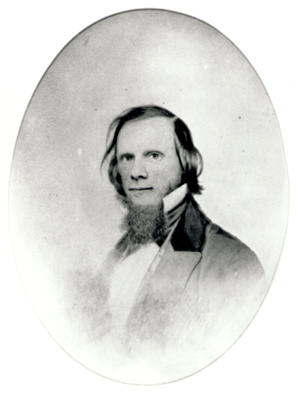
Isaac Sprague was a self-taught landscape, botanical, and ornithological painter. He was America's best known botanical illustrator of his day.

The Pacific Railroad Surveys (1853–1855) were of a series of explorations of the American West designed to find and document possible routes for a transcontinental railroad across North America. The expeditions included surveyors, scientists, and artists and resulted in an immense body of data covering at least 400,000 square miles (1,000,000 km2) on the American West. "These volumes... constitute probably the most important single contemporary source of knowledge on Western geography and history and their value is greatly enhanced by the inclusion of many beautiful plates in color of scenery, native inhabitants, fauna and flora of the Western country." Published by the United States War Department from 1855 to 1860, the surveys contained significant material on natural history, including many illustrations of reptiles, amphibians, birds, and mammals. In addition to describing the route, these surveys also reported on the geology, zoology, botany, paleontology of the land as well as provided ethnographic descriptions of the Native peoples encountered during the surveys.

Allium amplectens, the narrowleaf onion, is a species of onion plant. It is native to the west coast of the United States, in Oregon, Washington State and California, also British Columbia in Canada. It grows in woods and especially in clay and serpentine soils.

Hesperevax is a small genus of flowering plants in the tribe Gnaphalieae of the family Asteraceae.
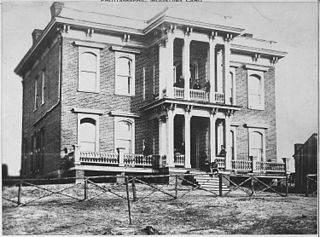
The U.S. Army Corps of Topographical Engineers was a branch of the United States Army authorized on 4 July 1838. It consisted only of officers who were handpicked from West Point and was used for mapping and the design and construction of federal civil works such as lighthouses and other coastal fortifications and navigational routes. Members included such officers as George Meade, John C. Frémont, Thomas J. Cram and Stephen Long. It was merged with the United States Army Corps of Engineers on 31 March 1863, at which point the Corps of Engineers also assumed the Lakes Survey for the Great Lakes. In the mid-19th century, Corps of Engineers' officers ran Lighthouse Districts in tandem with U.S. Naval officers.
Hulsea californica is a rare species of flowering plant in the family Asteraceae known by the common names San Diego alpinegold and San Diego sunflower. It is endemic to southern California, where it grows only in the Peninsular Ranges.
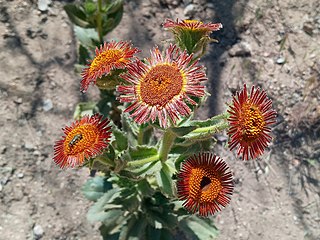
Hulsea heterochroma, commonly known as redray alpinegold, is a species of flowering plant in the family Asteraceae.
Hulsea nana is a North American species of flowering plant in the family Asteraceae known by the common name dwarf alpinegold. It is native to the western United States from Washington, Oregon, and far northern California.
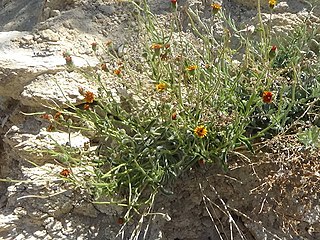
Hulsea vestita is a species of flowering plant in the family Asteraceae known by the common name pumice alpinegold.

Allium tribracteatum, known by the common name Threebract onion, is a species of wild onion found in California.
Indian Wells is a former settlement in Imperial County, California. It was located 8 miles (13 km) south-southwest of Seeley.
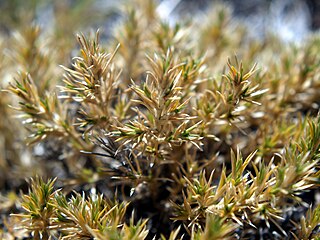
Munroa is a genus of New World plants in the grass family, native to North and South America.
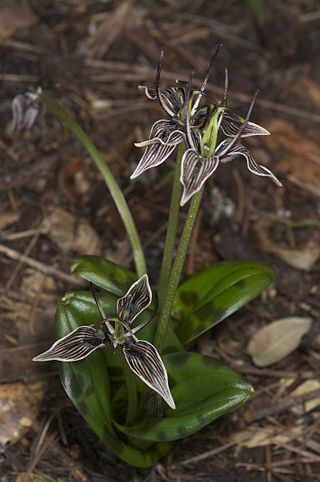
Scoliopus bigelovii is a species of flowering plant in the lily family known by several common names, including California fetid adderstongue, Bigelow's adderstongue, slinkpod, and brownies. It is native to California, where it is known from the Santa Cruz Mountains, parts of the San Francisco Bay Area and North Coast Ranges. It has also been collected just over the border in Oregon. It occurs in old-growth forest in the understory of redwoods. It grows in mossy, moist places, often in shade.
Stickneys Ferry was a settlement established in what became Tulare County after the Williamson Expedition of the Pacific Railroad Surveys of 1853 and before 1857, on what became the Stockton - Los Angeles Road and the crossing of the White River. It was probably established sometime between 1854 and 1856 because of the Kern River Gold Rush.

The Whipple Expedition (1853–1854) was led by Lieutenant Amiel Weeks Whipple and tasked with conducting a survey from Fort Smith, Arkansas, to Los Angeles, California, along the 35th parallel north. The expedition lasted for nine months and traveled 1,800 miles (2,900 km).

Centromadia fitchii, common name Fitch's spikeweed or Fitch's tarweed, is a species of North American plants in the tribe Madieae within the family Asteraceae. It is native to California and southwestern Oregon.

Centromadia pungens, the common spikeweed or common tarweed, is a species of North American plants in the tribe Madieae within the family Asteraceae. It is native to northern Baja California and the western United States. The plant is considered a noxious weed in parts of the Pacific Northwest.
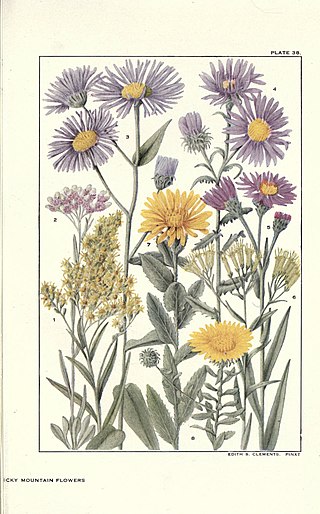
Dieteria bigelovii, also known as Bigelow's tansyaster or sticky aster, is a North American species of plants in the family Asteraceae.

Machaeranthera asteroides, the fall tansyaster, is a North American species of plants in the sunflower family. It is native to the southwestern United States and northern Mexico.
















